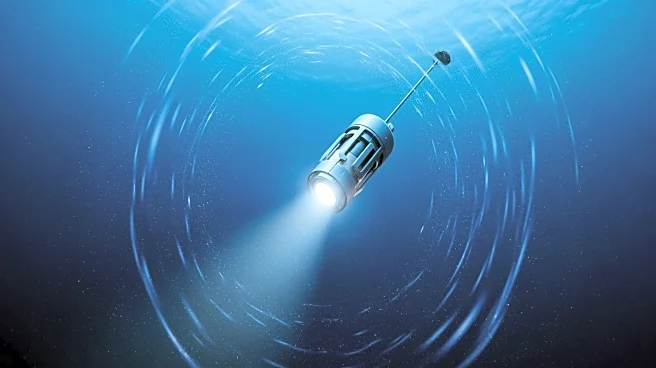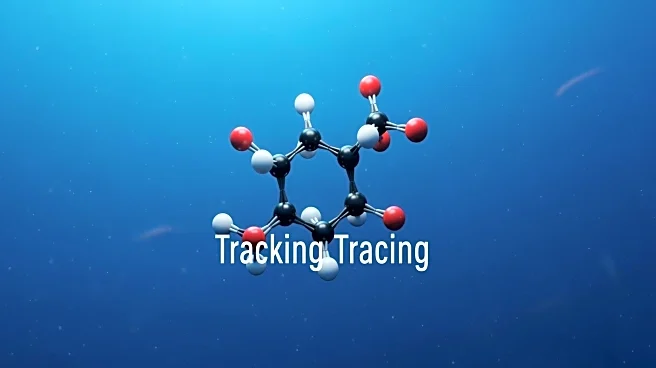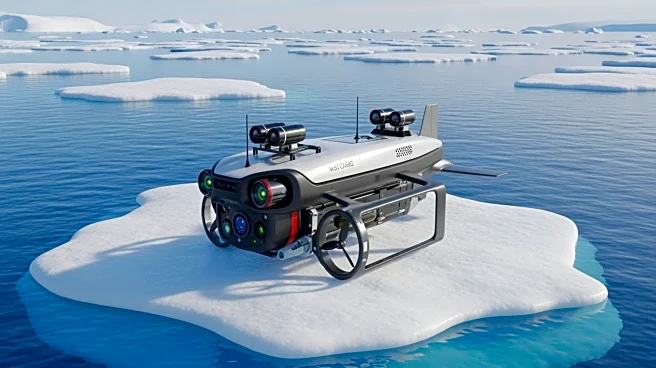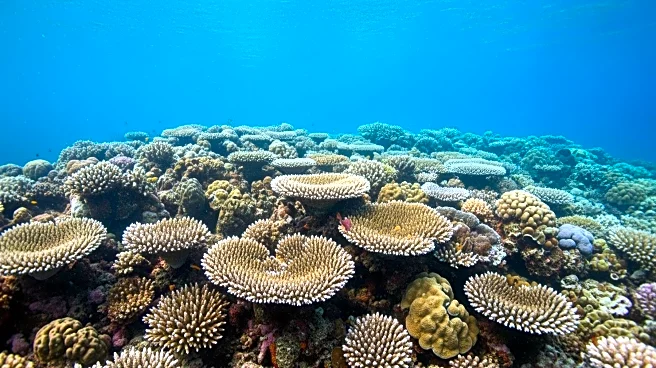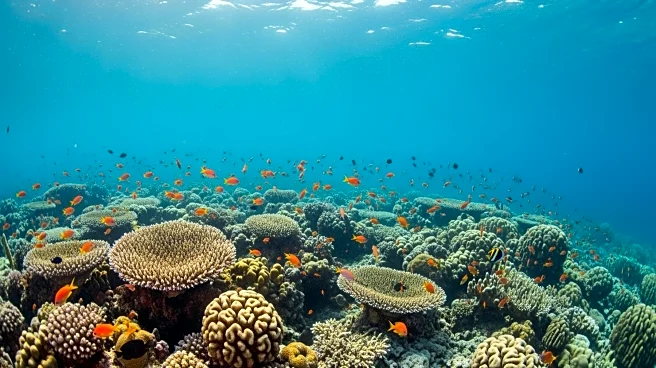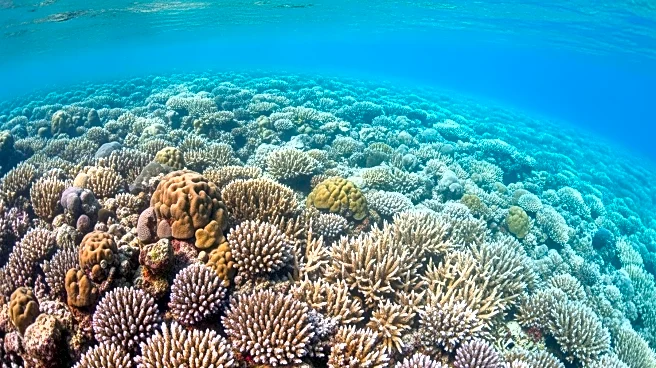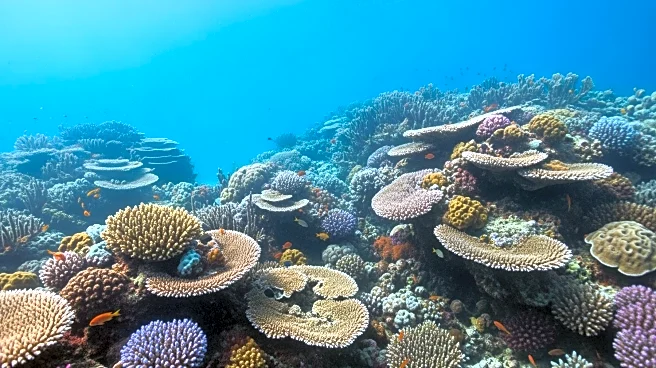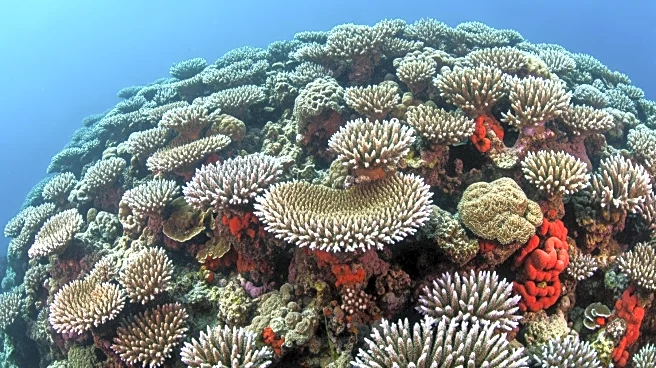What's Happening?
A team of chemists, microbiologists, and ecologists has created a molecular probe that glows when sugars are broken down by microbes in the ocean. This innovation, detailed in the journal JACS, allows
researchers to observe the competition between algae and microbes that consume their sugars. Algae play a crucial role in marine ecosystems by converting carbon dioxide into oxygen and organic matter, with sugars being central to this process. However, not all sugars are easily digestible by microbes, and some complex sugars can trap carbon on the seafloor for centuries. The new probe uses automated glycan assembly to tag sugars with fluorescent dyes, which emit light when the sugar is degraded by enzymes. This enables scientists to track sugar degradation in real-time, providing insights into microbial metabolism and carbon flux in ocean ecosystems.
Why It's Important?
The development of this glowing probe is significant for understanding the marine carbon cycle, which is vital for global climate regulation. By identifying which microbes can digest specific sugars, scientists can better understand how carbon is cycled in ocean ecosystems. This knowledge is crucial for predicting how marine environments respond to climate change and for developing strategies to mitigate its impacts. The ability to track sugar degradation without prior genomic knowledge allows for more accurate mapping of microbial activity and carbon turnover rates. This tool could lead to breakthroughs in understanding phytoplankton-bacterioplankton interactions and their role in carbon cycling, potentially influencing environmental policy and conservation efforts.
What's Next?
The glowing probe opens new avenues for research into microbial metabolism and carbon cycling in diverse ecosystems. Scientists can now pinpoint active degraders, map glycan breakdown, and quantify turnover rates in complex communities. This could lead to deeper insights into how environmental conditions affect microbial activity and carbon flux. Future research may focus on applying this tool to other ecosystems, such as the human gut, to explore microbial interactions and their implications for health and disease. The findings could inform strategies for managing marine resources and addressing climate change challenges.
Beyond the Headlines
The interdisciplinary collaboration between Max Planck Institutes highlights the importance of combining expertise from different fields to tackle complex environmental issues. The probe's ability to reveal hidden degraders without genomic knowledge could transform how scientists study microbial communities, offering a more holistic view of ecosystem dynamics. This research underscores the potential for innovative technologies to advance our understanding of natural processes and their impact on global systems.
